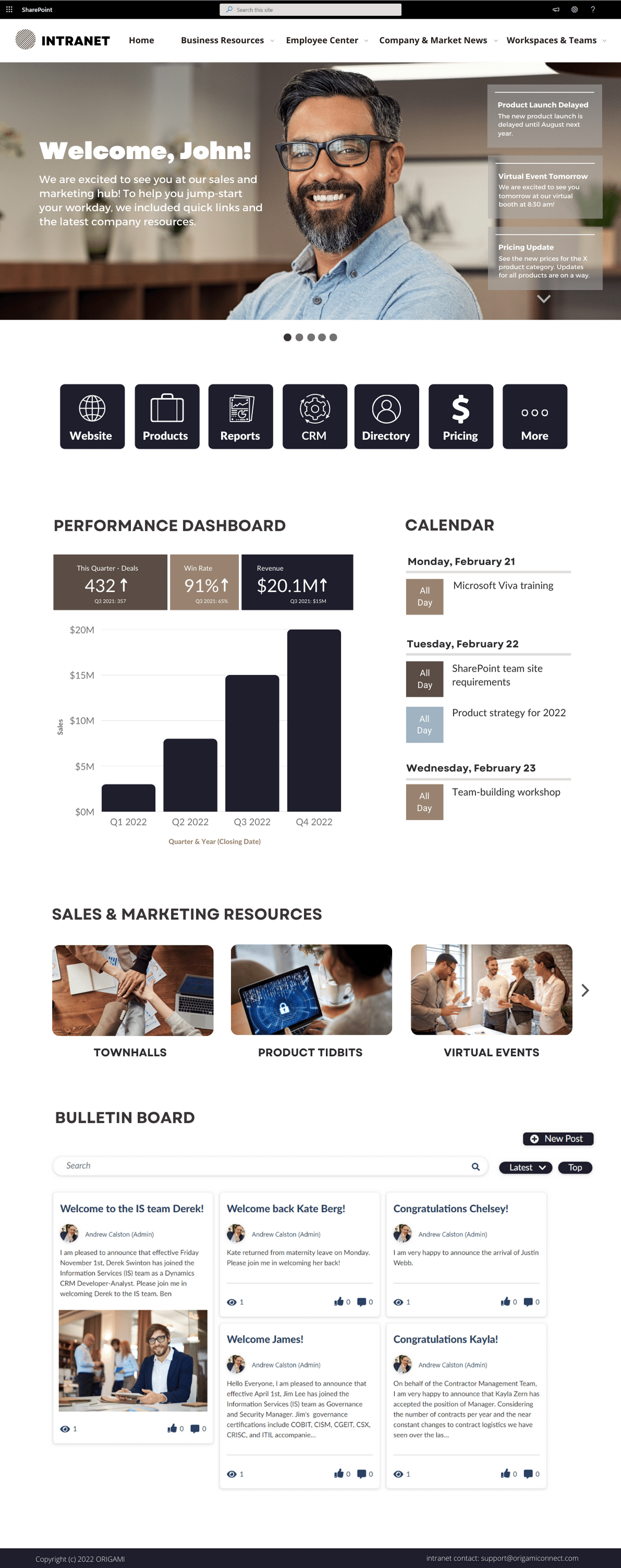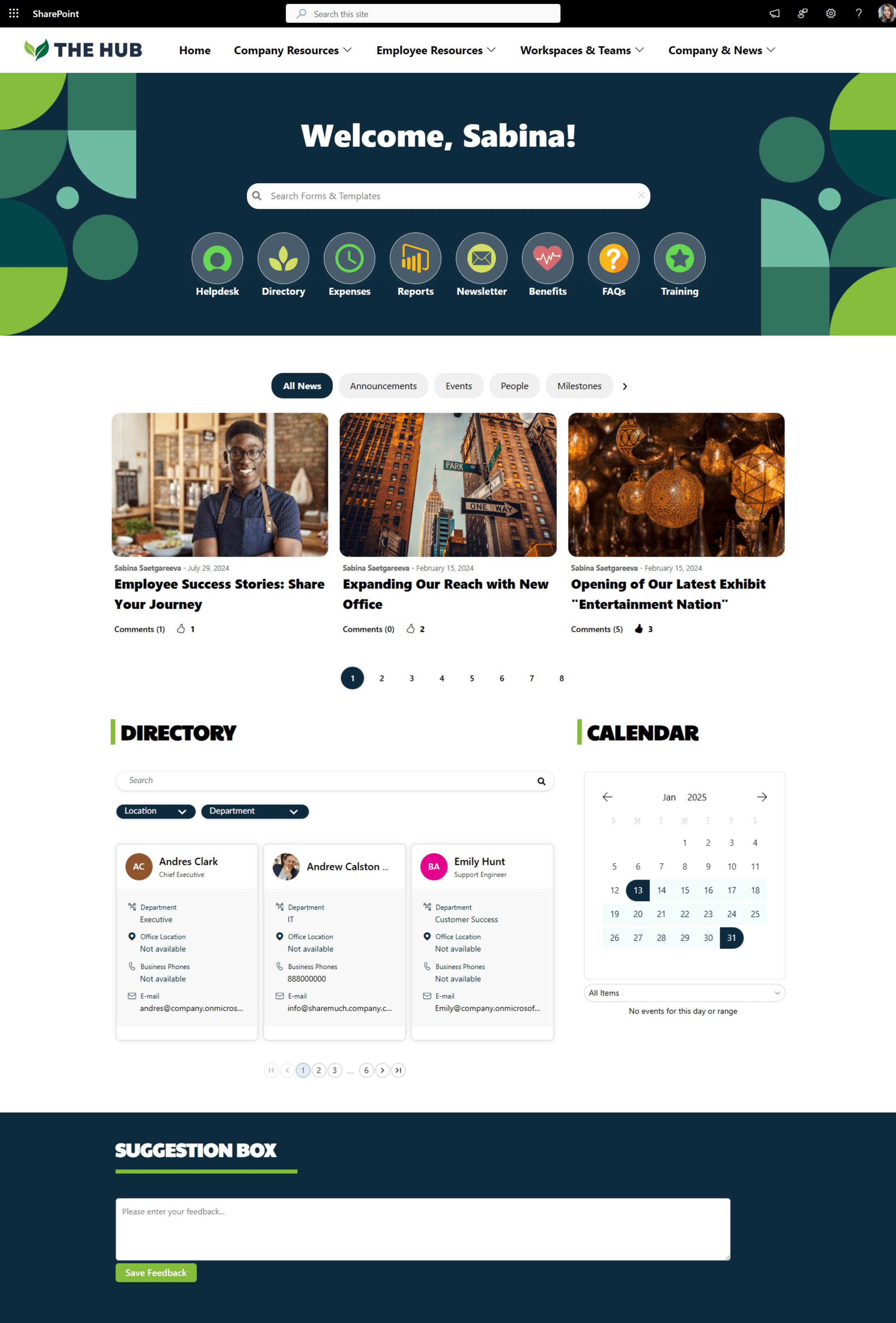Summary:
Your Digital Workplace is not a single tool. It’s a set of tools that make work possible by complimenting each other. By evaluating new tools that come on the market in terms of their fitness on your roadmap, you can avoid tools that are roadmap-distractions and require costly backtracking. Intranets have some very clear goals and purpose in comparison to other communication tools, but you have to ensure governance and adequate support in order to make the investment worthwhile.
1. Digital Workplace: Understanding
A bit more than a year ago, at Microsoft Ignite Conference in Orlando, I had a chance to speak with Joe Francis who runs a Yammer network for over 200,000 users at Glaxo Smith Kline.
Joe and their MS Partner Leslie provided some real close-up looks on how they manage their Yammer network and how it has transformed communication within their organization.
At the time, Yammer was known in the Microsoft community to be on the “decline“. I spoke with several SME’s in the area and everyone had a nervous feeling what’s going to happen with the product. And yet it does so well at GSK.
Just 5 years ago, Yammer was considered a disruptor and many claimed it will displace SharePoint as a communication tool. But it didn’t. Now, similar disruptor stories are told about Microsoft Teams.
Many organizations are struggling to figure out how Microsoft Teams and other tools in Office 365 suite will fit their digital landscapes.
How do you know when a new tool is right for the organization?
First, let’s understand what a Digital Workplace is:
A Digital Workplace is a cohesive set of tools and environments which help the company operate successfully and drive towards a business goal.
Few key characteristics:
Each tool must have its purpose and audience in your organization
For example: you’re not trying to do project management with Yammer, just as you wouldn’t use Microsoft Project for employee communication
There is a governance around each tool and business users are not confused
Users are not mistakenly putting confidential files onto an externally accessible network
The tool belongs to a roadmap
It’s not a rogue tool installed out of someone’s impatience. Even if it’s an ad-hoc solution, it needs to have a roadmap and transition plan
2. Is the Tool a Distraction or does it belong to a roadmap?
Now that we know what the Digital Workplace is and that it can have several tools in its arsenal, let’s define the “distraction” on a roadmap.
The Roadmap
Your roadmap is a way to go from point A (now) to point B (say, 3 years from now).
A tool that is a distraction will take you on a side road and lead nowhere so you’ll have to backtrack to get back on the right path.
There are a few characteristics of a digital tool that make it a distraction.
Tool is a distraction if
It’s a short term “band-aid”; not tied to solving a business goal for the company
Example: A team needs to collaborate with a contractor who doesn’t have a corporate account, so they create a Dropbox account for them to share files with.
This action does not create a strategy for sharing files externally, it’s simply a band-aid for this one case
It doesn’t fit core values or policies of the business
Example: Help-desk team using email to ask customer for passwords
This action can result in breaches and customer information leaks
It doesn’t scale with growing demand
Example: Using Microsoft Teams channels to store project documentation
This decision might make sense temporarily but as more projects you’re assigned to, the more channels you’ll have and searching, archiving, and accessing relevant deliverables will become a nightmare as the team grows
It has visible negative impact on business goals
Example: Email blast company news
This clogs people’s email. They stop paying attention to newsletters and miss important announcements resulting in disengagement
3. Where does the intranet fit into all this?
Intranet revolves around these key goals:
Be a hub for reliable corporate communication (leadership communication, KPIs etc)
Be a one-stop-shop for corporate knowledge (templates, samples, Knowledgebase, How to’s)
Be a central spot for resources that employees need to get their job done (manuals, policies, request forms)
Be a one-stop-shop for collaboration (including: document management, findings skills and expertise through directories, launching key forms such as HR forms)
Additionally, if you don’t have any overlapping tools such as HRMS systems, your intranet can also be a place for:
Employees to connect (employee news, events, and ideas contributions)
Staff Engagement (shout-outs and kudos)
4. Setting up your intranet for success
As Joe mentions in his interview about Yammer, you have to plan for success.
Here are the key steps to implement your intranet successfully:
Solutions
Obtain Executive buy-in
Propose a pilot project. Set targets, measure outcomes, report results
Avoid the trap of Planned Obsolescence
Planned Obsolescence has several shades, here are few examples
Example 1: Instead of maintaining the service subscription companies do not renew it hoping the software will just work. Instead, the software becomes stale and users become dissatisfied with its performance
Example 2: No budget assigned for an internal resource to collect employee requests, prioritize, and action them
Example 3: No budget for increased demand on helpdesk resources when rolling out a new software
Equally represented content
Content on the intranet is often heavily tilted towards communications with very little representation for the areas of the business. This reduces your audience and engagement.
Build intuitive information architecture
Not being able to find things on the intranet is one of the most common frustrations that users report
Test efficiency of your information architecture
Lock down major areas
Target your communication
Split news into global and targeted. Separate people news/watercooler from company news. Separate company-wide alerts (ex.: outage alerts) from news
Launch and Post launch activities
We’re here to help
Struggling to understand how Office 365 toolset fits the digital landscape in your organization?
It’s not always simple, and requires expertise to help you gain insight in the roadmap Microsoft has for its products. We’re here to help you.
We’d be happy to help you with a transparent and objective consultation to get you on the right track and maximize your existing Office 365 investment.
Yaroslav Pentsarskyy is the Director of Product at Origami. He's also 8 time Microsoft MVP, speaker at many local and worldwide tech events, and a published author of several SharePoint related books.












Get inspired with six company intranet examples built on data collected from hundreds of intranet sites. See intranet best practices and design ideas to help you build an intranet employees will love.